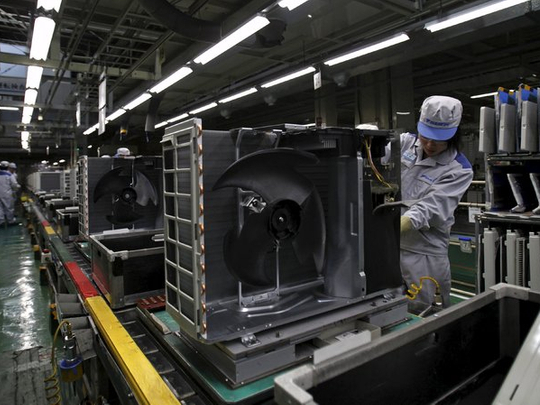
The commercial segment has a very strong presence in the UAE’s HVAC market. A TechSci Research report, UAE Air Conditioners Market by Product Type, By End Use Sector, Competition Forecast & Opportunities, 2011 – 2021, states that the market for commercial air conditioners is projected to grow at a rate of more than 9 per cent between these years.
The burgeoning construction industry, an increased focus on investment in infrastructure development, and the growth in hotel, tourism and healthcare sectors will spike the demand for ACs in the commercial segment, it adds.
Technological breakthroughs have transformed the commercial HVAC segment. Here are five trends that the industry is talking about.
VRF leads
Most brands in the UAE market – including Fujitsu, UTS Carrier, Daikin, Gree and LG – are focusing on Variable Refrigerant Flow (VRF). “VRFs units work only at the needed rate, allowing for substantial energy savings at partial-load conditions,” explains Mustafah Abdul Jabbar, Mechanical Engineer from Royal Cool. “VRF technology allows individual indoor units to heat or cool as required.” VRF ACs dominate the UAE market with a 12 per cent market share. While the technology has been around for a while, in the UAE market it is quite new since the earlier generation of inverter systems could not handle the high ambient temperatures, which can go up to 54 degrees Celsius. But new-age inverters by brands such as LG have sorted that issue out.
Evaporative cooling
Commercial HVACs of the future will increasingly use evaporative cooling systems, unlike traditional air conditioning systems that work on a vapour compression technique.
“Evaporative cooling systems use the same principle as perspiration to provide cooling,” ,” says architect Shivam Mehta, who has worked on a few offices in Dubai and Qatar. “Cooling towers are installed in commercial buildings, and they absorb up the heat generated within the building. Cooling tower water is circulated through a heat exchanger, the refrigerant vapour is condensed, and heat is transferred to the water. This cool water can be reused for other facilities.”
Building management systems
HVAC companies have begun taking into account climate change and the challenges it poses, and are constantly investing in R&D. Global technology powerhouse Siemens, in a recent report, stated that it has implemented two key smart technologies for building management and cooling that has resulted in energy bills reducing by 40 per cent. “Digital technologies have huge potential to make cities more sustainable,” says Koen Bogers, Senior Executive Vice-President of the Building Technologies Division at Siemens Middle East. “For example, at Dubai’s Wafi Mall, our Demand Flow solution achieved a 30 per cent saving on utility costs in its first year, representing an annual cost saving of some $439,000 [Dh1.6 million], with a guaranteed payback period of two-and-a-half years.”
Integrated cooling and heating
Smart cooling control is the newest technology to have been adapted by the commercial AC segment. The idea is to provide an integrated cooling and heating solution. “Panasonic and Schneider Electric, for instance, has a wireless interface solution that allow businesses to control their HVAC equipment, security, lighting, power and electrical distribution, from a single system,” says Mehta. Window and wall HVAC units with smart grid technology ensure that all utilities can be connected, monitored and controlled during times of high energy use and an excessive strain on the power grid.
Health-centric tech
Wellness and employee health are a major focus area for most corporates. Commercial HVAC systems increasingly incorporate air purification systems by eliminating volatile organic compounds (VOCs), reducing airborne allergens and keeping air smelling fresh and clean. Dubai International Airport is said to be world’s largest ozonated HVAC system. The ozone is injected into the central air conditioning system. The ozone generators are controlled by sensors activated by excessive VOC concentrations and turned off by excess ozone concentration sensors. All systems and components are controlled by a computerised building control system. On the commercial air-conditioners front, brands such as Siemens, Schneider and LG offer VOC-eliminating technologies to office buildings.












